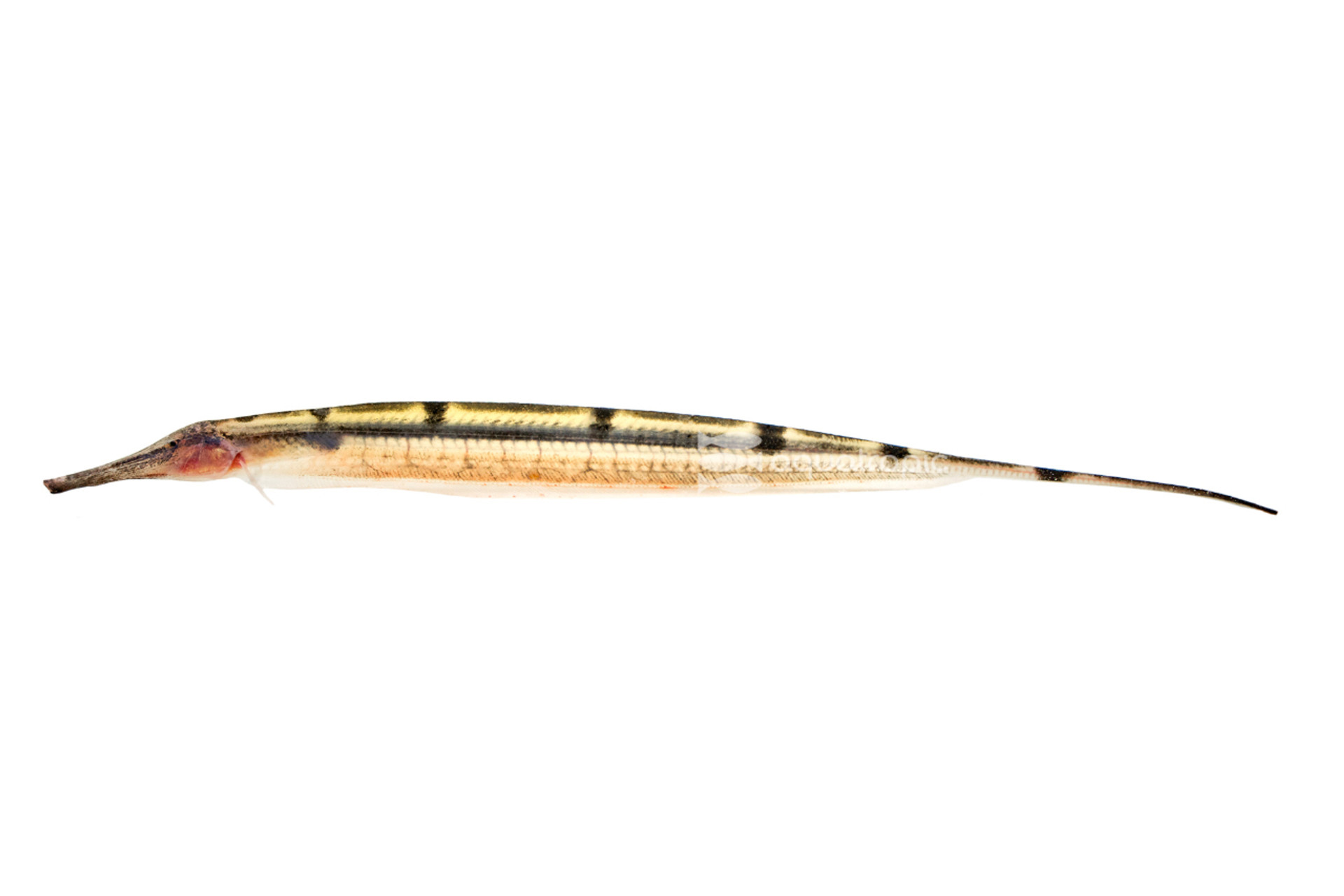The Little Knifefish That Could

Today's contestant on Tongue-Twisters of the Scientific Sort is Gymnorphamphichthys rondoni. Have fun with that one. That oddball of a name is more than appropriate for a really unique looking and acting fish that is commonly known as the Thermometer Knifefish. You'll also see it often called the Mousetail Knifefish and sometimes the Elephantnose Knifefish. They often have a thin red band running down their spine, and fine black striping along their ribs that looks a bit like a thermometer. The Mousetail and Elephantnose monikers are easy enough to figure out (though we think Elephantnose is a bit of a stretch...)
Knifefish all utilize an electric field to communicate with other Knifefish, and to hunt down and eat their prey; in the case of the Thermometer Knifefish, this food usually takes the shape of invertebrates that are buried in the sand. Their thin shape and bulbous nose allow them to winnow through fine sand, which they'll do throughout the low light periods in the aquarium. They'll also often bury themselves (sometimes partially) in sand during the day to hide and rest. These behaviors mean your Thermometer Knifefish will do best in aquariums that feature at least some sand, which should be fine grained and soft to protect the fish. These tanks could be planted but should offer plenty in the way of surface plants and driftwood etc. to give them ample dimly lit places to hide. They generally aren't a problem when it comes to uprooting plants unless the plants are very small, or very poorly rooted (or both). The tank should be covered. A single specimen could be kept in a tank as small as 30 gallons.
Thermometer Knifefish will do best in tanks that are very stable in regard to water chemistry and water quality. The waters of their South American home rivers are generally very soft, slightly acidic (pH between 6 and 7) and clean (no ammonia or nitrite and nitrate under 10ppm.) These parameters should be mimicked as closely as possible and kept as stable as possible in your display.
Even a short glance at a Thermometer Knifefish will reveal a critter with absolutely tiny eyes; they do not see well. They're also very peaceful and these two factors mean they are easily out competed for food. They'll take frozen foods and even pellet foods (and live foods that are small enough for them). Here we like to feed them the full array of the Gamma Brine Plus products as well as bloodworms and tubifex. They'll also relish live Brine and Tubifex. Any feeding should happen right after the lights go out and just before the lights come on to give them the best chance of getting enough sustenance. Once they learn how to take pellets, the Nutramar Freshwater Complete is an excellent, broad spectrum, protein dense food that we both recommend and use here in house.
Another way in which you can help them stay well fed is by choosing the other fish in the display carefully. You can keep Thermometer Knifefish in groups if you have enough space and you add them to your tank all at once. They won't school but will generally live in together in loose aggregations. They're also good tankmates for a variety of fish like (but not limited to) peaceful Tetras, Angelfish, Otocinclus and Corydoras. The Knifefish won't bother most invertebrates, but shrimp that are small enough to be consumed probably will be. Avoid large, boisterous tankmates or fish that might pick on them while they sleep.
Thermometer Knifefish aren't regularly available as an aquacultured specimen, which represents an opportunity for the advanced hobbyist and aspiring fish breeder. There is little in the way of published literature on the topic out there, so in many ways you'd be breaking new ground. Most of the aquarium fish from tropical south America generally spawn in the wet part of the year, where both habitat and food availability are increased. Large water changes with slightly cooler water might be a trigger event for them. We assume there will be substantial losses due to the parents and/or other Knifefish eating eggs and or fry, so you'd likely need a plan for separating the babies.
If you love an oddball fish and have been looking for one that doesn't get too big, the Thermometer Knifefish (at under six inches) is a perfect fit for your peaceful community tank. What an interesting counter point is that this fish could be for a tank full of different tetras. If this sounds like just your tank of fish, head over to your Local Fish Store and ask them about getting you a few Gymnorphamphichthys rondoni from Aquatropic today!